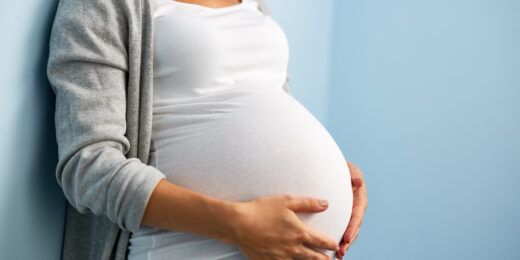Epidurals, one of the most common forms of pain relief used during labor and delivery, are considered both safe and effective, but they come with the caution that there is a small risk of headaches the first week or so after giving birth.
In a new Stanford Medicine study, researchers say that pregnant women who are discussing anesthesia options with their doctors should be warned that those headaches may be longer lasting than previously understood.
"Our findings may change the way anesthesiologists talk to women about the risks of epidurals," said Jessica Ansari, MD, lead author of the study who, as an obstetric anesthesiologist, routinely performs epidurals on pregnant women.
"I still tell my patients that overall an epidural is a very safe procedure that I would and did choose for my own deliveries, but now I add that in addition to a very small risk of getting a severe headache from the epidural needle, there is some concern that the headaches could be chronic."
The study was published July 8 in the British Journal of Anaesthesia. Pamela Flood, MD, professor of anesthesiology, is the senior author of the study.
The epidural placement
An epidural procedure involves the insertion by an anesthesiologist of a large needle into the space between the bones and the lining that holds fluid and the spinal cord in the lower back. The needle is used to place a soft catheter or tube that delivers the anesthetic or medication to block pain during labor.
In about 1% of cases, the needle advances deeper than intended and punctures the spinal membrane and causes a large leak of spinal fluid, which can cause headaches, said Ansari, clinical assistant professor of anesthesiology.
Epidurals are common; about 2.8 million women get them during childbirth each year, according to the study. That means about 28,000 women each year are affected by the complication of an unintentional dural puncture annually and at risk of spinal headaches.
It's not clear what causes the headaches, but during the past 10 years there has been a growing body of evidence showing that they may be more serious and persistent than previously thought, Flood said. This study was designed to provide more conclusive answers about the type of headaches, how many women get them and how long they last, the researchers said.
"We set out to conduct a prospective study, which means we enrolled women at the time of their delivery and followed them for a year," Ansari said.
It took three years to recruit enough patients because dural punctures are rare. After agreeing to participate, the women were telephoned by researchers one week after childbirth to see if they had any headaches. Then they received a phone call at two months, six months and a year -- each time answering a similar set of questions on a survey.
Among the 99 women enrolled in the study, all received epidurals and had successful births. Twenty-two of them had unintentional dural punctures. Analysis of the surveys showed that at two months postpartum, 74% of women with a dural puncture reported disabling headaches compared to only 38% of women who didn't. At six months the comparison was 56% to 25%.
"We have confirmed in this well-powered prospective study that women who had unintentional dural punctures from an epidural needle have double the risk for chronic headaches compared to new moms who did not have this complication," Flood said.
Extending care and treatment
Recent similar findings that support these results suggest that pre-childbirth counseling should include information about the complication, follow-up care and referral, she added.
It's important that woman at risk of these disabling headaches have access to follow-up care, said Meredith Barad, MD, a co-author on the study and a neurologist, headache and pain physician.
"The anesthesiologists take care of the patients in the hospital, but then they go home, where everyone is focusing on the mother-baby relationship," Barad said. "Nobody is asking the mothers how their headaches are. So, these headaches go under treated and could lead to many problems downstream."
The study also showed that dural puncture was associated with a decrease in breastfeeding, and that the headaches routinely interfered with daily life.
Ansari said the study findings mean that these women should be carefully followed to support them and further investigate ways to treat spinal headaches.
"Among the many things that most new mothers have to do is walk around to care for their newborns," Ansari said. "Breastfeeding is hard enough without this throbbing headache every time you sit up. New mothers are dealing with pain from delivery, sleeplessness. Add to that a disabling headache that may last for a long period of time. It's a lot."
Image by Kurhan






